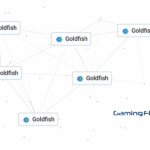What Did Bubble Do?
Bubble, a no-code platform that allows users to build web and mobile applications without writing code, has made significant strides in revolutionizing the way software is developed. Founded in 2012, Bubble has empowered individuals and businesses of all sizes to bring their ideas to life quickly and efficiently, democratizing the process of application development.
The Rise of No-Code Development
The emergence of no-code platforms like Bubble has been driven by the growing demand for rapid application development and the need to bridge the gap between business requirements and technical implementation. Traditional software development often requires extensive coding knowledge, time, and resources, making it inaccessible to many individuals and small businesses. No-code platforms, on the other hand, provide a user-friendly interface that enables anyone to create sophisticated applications without writing a single line of code.
Bubble’s Unique Approach
Bubble’s approach to no-code development is centered around its visual programming interface, which allows users to design their application’s user interface, define its logic, and connect to various data sources. The platform provides a comprehensive set of tools and features that enable users to create complex applications with ease, including:
- Drag-and-Drop Interface: Bubble’s intuitive drag-and-drop interface makes it easy for users to design their application’s layout by simply dragging and dropping pre-built elements onto the canvas.
- Visual Workflow Editor: The visual workflow editor allows users to define their application’s logic by connecting various actions and events using a simple point-and-click interface.
- Database Management: Bubble’s built-in database management system enables users to create and manage their application’s data, including user accounts, content, and settings.
- Plugin Ecosystem: Bubble’s plugin ecosystem provides access to a wide range of pre-built integrations and features, allowing users to extend the functionality of their applications without writing code.
- Hosting and Deployment: Bubble offers hosting and deployment services, making it easy for users to launch their applications on the web or as mobile apps.
The Impact of Bubble
Bubble’s no-code platform has had a significant impact on the software development industry, empowering individuals and businesses to create applications that were previously out of reach. Here are some of the key ways Bubble has made a difference:
- Democratizing Application Development: By making it easier for anyone to create applications, Bubble has democratized the process of software development, allowing individuals and small businesses to compete with larger organizations.
- Accelerating Time-to-Market: Bubble’s no-code approach significantly reduces the time and resources required to develop applications, allowing users to bring their ideas to market more quickly.
- Fostering Innovation: By lowering the barriers to entry for application development, Bubble has fostered innovation and creativity, enabling individuals to explore new ideas and bring them to life.
- Empowering Non-Technical Users: Bubble’s user-friendly interface has empowered non-technical users to create applications, allowing them to take control of their digital transformation and drive business growth.
- Enabling Rapid Prototyping: Bubble’s no-code platform makes it easy for users to create prototypes quickly, allowing them to test and iterate on their ideas before investing significant resources into development.
The Future of Bubble
As the no-code movement continues to gain momentum, Bubble is well-positioned to play a leading role in shaping the future of application development. The platform is constantly evolving, with new features and integrations being added regularly to meet the changing needs of its users.Some of the key areas where Bubble is expected to make significant strides in the future include:
- Mobile App Development: Bubble is already capable of creating mobile apps, and the platform is expected to continue to improve its mobile development capabilities in the coming years.
- Artificial Intelligence and Machine Learning: As AI and ML become more prevalent in application development, Bubble is likely to integrate these technologies into its platform, making it easier for users to create intelligent applications.
- Enterprise-Level Features: As Bubble continues to grow, the platform is expected to add more enterprise-level features, such as advanced security, compliance, and scalability options, to meet the needs of larger organizations.
- Internationalization and Localization: With users from around the world, Bubble is expected to improve its internationalization and localization capabilities, making it easier for users to create applications that cater to diverse audiences.
- Collaboration and Team Management: As more users and businesses adopt Bubble, the platform is likely to enhance its collaboration and team management features, making it easier for teams to work together on application development projects.
FAQ Section
Q1: What is Bubble?
A1: Bubble is a no-code platform that allows users to build web and mobile applications without writing code. It provides a visual programming interface for designing user interfaces, defining application logic, and connecting to various data sources.
Q2: Who can use Bubble?
A2: Bubble is designed for individuals and businesses of all sizes, including entrepreneurs, small business owners, and non-technical users who want to create applications without extensive coding knowledge.
Q3: What types of applications can be built with Bubble?
A3: Bubble can be used to create a wide range of applications, including e-commerce platforms, social networks, marketplaces, and business management tools. The platform’s flexibility allows users to build custom applications tailored to their specific needs.
Q4: How does Bubble compare to traditional software development?
A4: Traditional software development typically requires extensive coding knowledge, time, and resources, while Bubble’s no-code approach makes it easier and more accessible for anyone to create applications quickly and efficiently.
Q5: What are the key features of Bubble?
A5: Bubble’s key features include a drag-and-drop interface for designing user interfaces, a visual workflow editor for defining application logic, a built-in database management system, a plugin ecosystem for extending functionality, and hosting and deployment services.
Q6: How much does Bubble cost?
A6: Bubble offers several pricing plans, ranging from a free plan for basic usage to more advanced plans for larger teams and businesses. Pricing is based on factors such as the number of users, storage, and custom domain usage.
Q7: Is Bubble secure?
A7: Bubble takes security seriously and offers various security features, including SSL encryption, user authentication, and access control. However, it’s essential for users to follow best practices and implement additional security measures as needed.
Q8: Can Bubble be used for enterprise-level applications?
A8: While Bubble is primarily used by individuals and small businesses, the platform is increasingly being adopted by larger organizations. As Bubble continues to evolve, it is expected to add more enterprise-level features to cater to the needs of larger teams and businesses.
Q9: What is the future of Bubble?
A9: The future of Bubble looks promising as the no-code movement continues to gain momentum. The platform is expected to enhance its mobile app development capabilities, integrate AI and ML technologies, add more enterprise-level features, improve internationalization and localization, and enhance collaboration and team management features.
Q10: Where can I learn more about Bubble?
A10: You can learn more about Bubble by visiting their official website at bubble.io or by exploring the Wikipedia page dedicated to the platform.
Summary Table
| Feature | Description |
|---|---|
| Drag-and-Drop Interface | Allows users to design application layouts by dragging and dropping pre-built elements. |
| Visual Workflow Editor | Enables users to define application logic using a point-and-click interface. |
| Database Management | Provides a built-in system for creating and managing application data. |
| Plugin Ecosystem | Offers access to a wide range of pre-built integrations and features. |
| Hosting and Deployment | Includes hosting and deployment services for launching applications on the web or as mobile apps. |
Bubble’s no-code platform has revolutionized the way software is developed, empowering individuals and businesses to create applications quickly and efficiently. By democratizing application development, Bubble has fostered innovation, enabled rapid prototyping, and empowered non-technical users to take control of their digital transformation. As the no-code movement continues to evolve, Bubble is well-positioned to play a leading role in shaping the future of application development.



